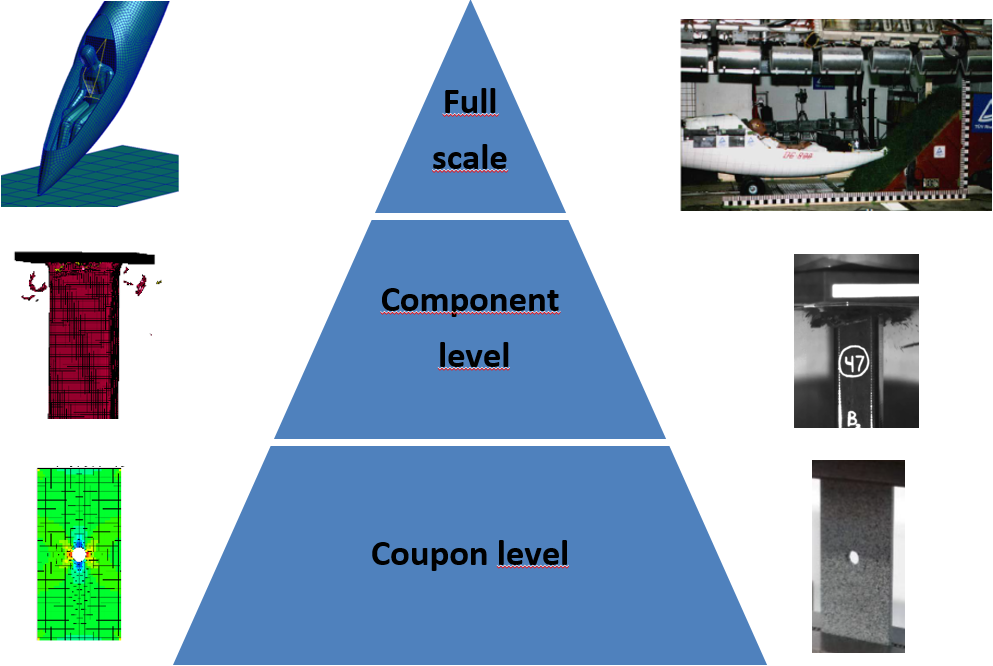CraCpit – Research on the Crashworthiness of Sailplane Cockpit Structures
The project will deliver results on each step of the test pyramid approach (see below) ranging from validated material cards for the involved fibre reinforced materials over guidelines for the design and simulation of crashworthy sailplanes to recommendations for the adaption of certification processes.
Project Partners
Akaflieg München; NaSiCo: Leibniz Universität Hannover, Institut für Statik und Dynamik; Akaflieg Hannover
Duration
01.01.2018 – 31.12.2022
Funding authority
German Federal Ministry for Ecomomic Affairs and Energy
Motivation
Sailplane fuselages are typically hand laminated, fibre reinforced shell structures, which are designed to withstand a variety of flight loads, e.g. maneuvering and gust loads. Furthermore, the certification specifications CS-22 requires manufacturers to carry out quasi-static tests using load multiples to account for crash scenarios. Since these scenarios are far different from the conditions experienced during impacts, such as a hard landing, this project will deliver a thorough investigation of issue, including the definition of common load cases, the determination of the material response under high strain rates and a full-scale structural crash test and simulation.

Emergency Landing Conditions, Malis et al., ICAS, 2006; Initiative ProSegelflieger, Martin Volck, OSTIV-SDP,
04.10.2015, Bern; Crashworthiness of CFRP, http://energy.ornl.gov/CFCrush/rate_tests/rate_tests.cgi)
Method
Since the project will take place in the area of testing and simulation simultaneously, a variety of software and hardware has to be involved. The characterizations will take place using TUM - LCC’s electromechanical, servohydraulic and high-speed testing machines and different optical strain measurement systems. Existing material characterization techniques at the TUM - LCC will be used and readapted to the project’s needs. On the other hand, all FEM simulations will be carried out in LS-Dyna, whilst pre- and postprocessing will be conducted in Ansa and Meta. The FEM models will be created using detailed up-to-date techniques and mesh qualities as well as pre-implemented material models. The final step of the project will be a DoE study using the validated fuselage model in order to optimize the cockpit structure regarding crashworthiness.
Acknowledgement
The chair thankfully acknowledges the funding of “CraCpit – Methodenentwicklung und –verifikation zur Dimensionierung von Crashstrukturen für Leichtflugzeuge mit Abbildung unterschiedlicher Antriebskonfigurationen und zur Vereinfachung des Zulassungsverfahrens” (funding code: 20E1703B) provided by the German Federal Ministry of Economic Affairs and Energy under the scheme “Luftfahrtforschungsprogramm (LuFo V-3)”.

Contact Persons
Dr.-Ing. Swen Zaremba